Ornamental plants refer to those plants that do not have any medicinal or commercial value and are grown only as statement pieces for their beauty and aesthetics.
These include flowering plants, foliage plants and grasses. Ornamental plant examples include:
- Petunias
- Sansevieria
- Monsteras
- Orchids
- Fittonias
- Ixora
- Cacti
- Succulents
- Pothos
- Sedges
- Restio
- Hoyas
- ZZ plants
- Bonsai
- Dracaenas
- Ornamental palms
- Anthuriums
- Philodendrons
Next, we will discuss these examples in detail.
Ornamental plant examples:
Philodendrons:
Philodendrons are one of the largest family of ornamental plant examples that are known for their huge variety having 489 species. Renowned for their beautiful large variety of foliage in different shapes, colours and sizes. Unlikely most plants these philodendrons can grow epiphytic, Hemi-epiphytic and even terrestrial. Its probably because of these properties philodendrons are such popular and expensive among houseplant collectors.

Image: Wikipedia
ZZ plants
Another famous ornamental plant example among collectors and casual hobbyists alike, ZZ plants or Zamioculcas zamiifolia is actually native to Africa. Known for its thick leaves, sturdy nature and the fact that it is nearly impossible to kill makes it quite a hit even amongst those with a black thumb. They come in 4 varieties- the normal, zenzi or dwarf variety, the raven ZZ and a new variegated cultivar.
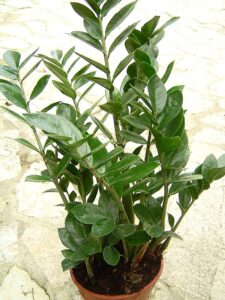
Image: Wikipedia
Pothos
Pothos commonly known as the money plant or devil’s ivy is quite a famous ornamental plant example. Considered one of the fasted growing houseplants among people, pothos actually belongs to the Epipremnum family. Most people like to trail them in hanging pots or baskets, but they grow in nature as climbers attaching themselves to bigger trees.

Image: Wikipedia
Hoyas
Another tropical ornamental plant example native to Southern and Southeastern Asia along with parts with some parts of Australia. Also called wax flowers or wax wines, the leaves of these plants come in various shapes and sizes. They have a waxy look to them, hence the name. These plants also produce beautiful flower clusters that are often very fragrant.

Orchids
Orchids are a large family of flowering plants, found across the globe having 28,000 species that are currently known. Most orchids are usually epiphytic that is they grow on other trees and not in soil. They produce flowers in almost all known colours which makes them the pride and joy of many hobbyists. However, the vanilla used in cooking and perfumes is also grown from an orchid.
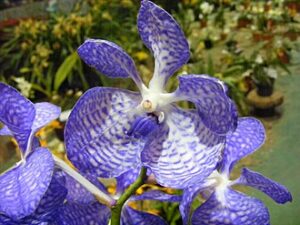
Image: Wikipedia
Cacti
Cacti are generally desert plants with leaves modified into spines. In the last half-century, they have gained great popularity as house plants, as they are low maintenance plants and easy to care for. However, some cacti can also produce beautiful flowers like the moon cactus.
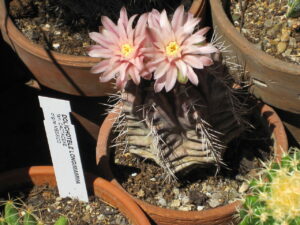
Ornamental Palms
The palms belong to the family Arecaceae, which includes date palms. However ornamental palms are grown in the garden or indoors for their foliage and beauty. Ornamental palm varieties include- the Areca palm, fishtail palm, sago palm, ponytail palm and many more.

Image: Wikipedia
Restio
Restios are a large genus of flowering plants belonging to the family Restionaceae, but mainly known for their beautiful and bushy foliage. A very common ornamental plant example seen in lots of public parks as grass or simply plants for outlining the landscape. The reason for being an outdoor hit is for being really hardy against most weather conditions.

Image: Wikipedia
Dracaena
Comprising 120 species of plants and succulent shrubs Dracaena are endemic to Africa, southern Asia to northern Australia, with two species in tropical Central America. Normally they have 2 specific growth types- treelike or rhizomes. Both varieties are popular as houseplants for their hardy nature.

Image: Wikipedia
Petunia
Petunias are a widely popular ornamental plant example known for their beautifully coloured flowers. A genus of only 20 species native to South America petunias are popular across the globe and grown in most households. They produce a bounty of single or bicolour flowers during the colder seasons from fall to spring and become dormant in summers.
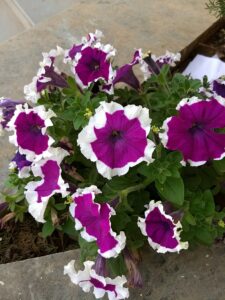
Image: Wikipedia
Fittonias
Native to the tropical rainforests of South America fittonias is another ornamental plant example. Also called neve plants fittonias are known for their small green leaves and colourful venation in white, pink or red.
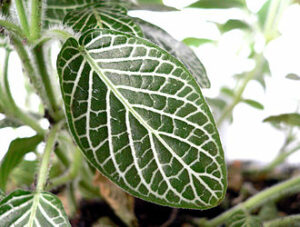
Image: Wikipedia
Ixora
Another ornamental plant example known for its flowers is the Ixora. Typically native to the tropical and subtropical regions of the world, the Ixora plant is an evergreen shrub that normally flowers year-round. It produces large clusters of small florets in a variety of colours- red, white, yellow, pink peach and more. Even then the Ixora family consists of a total of 562 species worldwide.
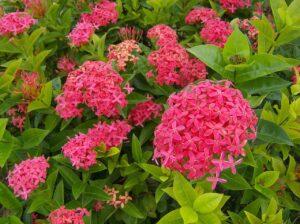
Image: Wikipedia
Sansevieria
Another common low-light houseplant is the snake plant also called Mother-in-law’s tongue or devil’s tongue. Sansevieria plants consist of a total of 70 species that differ in shape, size and colour. The leaves grow from below the ground and are usually arranged in a rosette form.
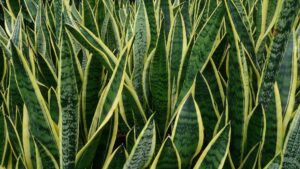
Monstera
Monsteras swiss cheese plants or split-leaf philodendrons are one of the most sought after ornamental houseplants. These tropical beauties get their name from their beautiful fenestrated leaves i.e. their leaves naturally have holes in them. These plants usually grow against larger trees and climb them up, hence they are equipped with large aerial roots to bind themselves to their support.
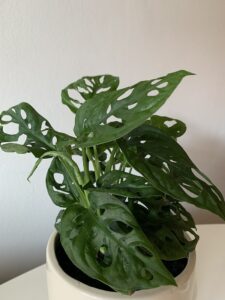
Anthuriums
Another very popular ornamental plant example are the anthuriums that contain over 100 species of flowering plants. Due to their flower shape they are also called “tail flower” or “flamingo flower”. Some species produce brilliant colored flowers in red, pink, orange, yellow or more. On the other hand some species are better known for their stunning foliage.

Image: Wikipedia
Bonsai
Bonsai are not a plant specie but rather a technique of making miniatures of larger tree varieties. The technique originated in Japan and spread worldwide and today a Bonsai can cost up to a million USD.

Image: Wikipedia
Sedges
Another ornamental plant example sedges are what we call grass-like plants. The reason they are often preferred over real grass is beacause they are easier to maintain year-round. Another reason is that sedges naturally come in different shades of green to bronze to gold and many more making them more esthetically pleasing.

Image: Wikipedia
Succulents
Another very popular ornamental plant example succulents are called so as they have thick leaves that store water. Succulents naturally grow in arid regions of the globe hence are used to lots of sunlight and little water. Meaning even forgetful waterers can keep them. Succulents can be in the form of rosettes or strings with modifies leaflets.
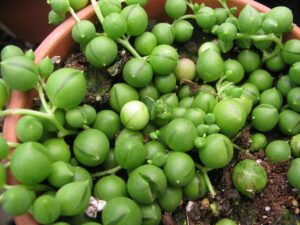
Image: Wikipedia
Also Read:
- Are protists paraphyletic
- Back muscle anatomy
- Do bacteria have a nucleus
- Are decomposers biotic or abiotic
- Carbohydrates polymer examples
- Saprophytic bacteria examples
- Nucleic acid monomer
- Cytoskeleton
- Animal chromosomes structure
- Zygote vs embryo 2

I am Trisha Dey, a postgraduate in Bioinformatics. I pursued my graduate degree in Biochemistry. I love reading .I also have a passion for learning new languages.
Let’s connect through linked in: